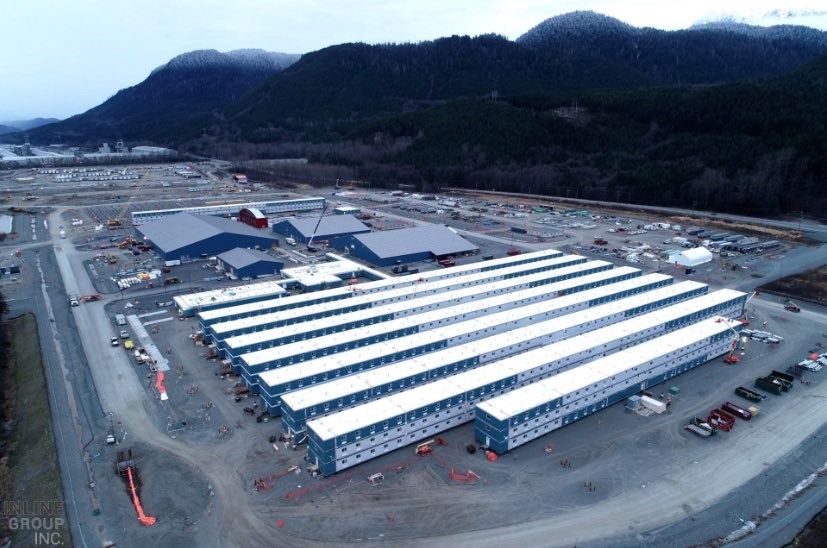LNG Canada will stop flying in workers to its work site in Kitimat to reduce exposure to the workers who are already there, reducing the site's workforce by half.
LNG Canada had already taken steps to reduce travel between Canada and China, where LNG modules are being built, and requiring some employees to work from home.
On Monday night, LNG Canada and its main contractor, JGC Fluor, announced they would take the additional step of reducing the number of workers at the Kitimat site, where workers are housed in a massive work camp.
Workers typically fly in to work for two weeks, then fly out for one week. But the company plans to reduce the number of workers at the site by half. Currently there are about 1,750 workers on site.
Susannah Pierce, LNG Canada's director of corporate affairs, said she doesn't know how long the reduction will last or if further reductions will be needed.
"We're going to try to stay as much as we can ahead of the issue and take a look at what further actions may be required, which might also mean that we reduce further. In terms of ramping back up, that's going to be decided to based on when we believe it's safe to do so.
"We do need to make sure that we have people on site who can ensure that the facilities continue to be safe and secure, but then also from an environmental perspective make sure that we're maintaining the site from the compliance perspective. So it won't be shut down because we'll have to keep staff on to do those sorts of things."
The associated Coastal GasLink pipeline project has also been taking steps to reduce non-essential work, but as of Tuesday, March 17, had not announced any workforce reductions at work camps.
Spring breakup meant fewer workers on construction sites in any event. With a reduced workforce, the company tries to use local workers as much as possible to reduce the need to bring workers in from other cities or provinces.
As for how long it takes to contain the COVID-19 virus to the point where economic activity can resume, China offers some hints.
China had shut down fabrication yards where the LNG Canada modules are being built for several weeks earlier this year.
"Work has resumed in China at the fabrication yards, so it's interesting to see how that has shifted," Pierce said.
LNG Canada's move to reduce its workforce in Kitimat raises questions about other large energy projects, like Site C dam, where thousands of workers are housed in work camps, and the Trans Mountain pipeline expansion.
Trans Mountain reports that it doesn't have any work camps yet.


.png;w=120;h=80;mode=crop)
